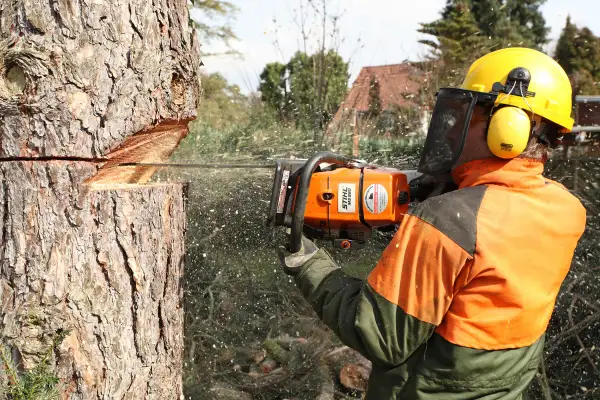4 Things to Know Before You Prune a Tree

It turns out money does grow on trees. Mature specimens can add 10% or more to your property value, according to Greenwich, Conn., arborist and tree appraiser Scott Cullen. But trees can cost big money, too—if a giant oak falls and crushes your garage during the next big storm, for example. Here’s what you need to know about maintaining the trees on your property.
Hire an arborist to inspect them
To mitigate your risk, ask a certified arborist to come and check out your trees every five years or so. This tree expert will look for signs of disease, weak limbs, and branches that are closer than about 10 feet from any building. The cost for resolving such problems typically ranges from $100 to $1,000, says Jim Skiera, of the International Society of Arboriculture, though it can cost $2,000 or more to completely remove a large specimen.
Understand insurance coverage
In urban and suburban neighborhoods, it’s common for trees to grow along property lines. As a general rule, the owner of the property where the tree meets the ground is the owner of the tree—and responsible for it, says real estate attorney and professor of law at Brooklyn Law School David Reiss. If you own an obviously diseased and dying tree that falls and damages a neighbor’s house or, worse, hurts someone, you could be financially liable for the damage. But in general, if it’s a healthy tree that has been routinely cared for and inspected by a professional, the owners of the property that gets damaged by your tree will likely be covered by their own insurance for damage to their buildings or vehicles.
Read next: How to avoid pricey homeowner's insurance claims
Know your right to prune
Just as leaves and branches that fall on your land are yours to clean up, regardless of whose tree they came from, you also generally have the right to trim any part of a tree that’s on your property. So if a limb from your neighbor’s tree is bringing squirrels onto your roof or dropping walnuts onto your new car, you are within your rights to have the limb removed. You can’t cut it beyond your property line, however, and if any trimming you do were to kill the tree (or render it unstable or unhealthy), you could be liable for paying its owner for lost value.
In any case, living by the letter of the law is rarely the best solution when it comes to neighborhood relations. Discuss tree issues with all parties involved before anyone fires up a chainsaw, says Reiss. If a tree is yours—in other words, if it leaves the ground in your yard—it’s essentially your tree and your responsibility to keep properly maintained and pruned. Even if you technically aren’t responsible for shaping the limbs over on the neighbor’s side, the increased cost for doing that while a tree guy is on site is well worth the good relations it will engender. If the tree trunk splits the property line, discuss the needed tree work and ask your neighbor to split the bill.
Call about street trees
For trees within a few feet of the street, your town may own the trees and may be responsible for maintenance pruning and liability. Call your town’s tree warden or public works department to find out if the trees along your right of way belong to you or the town. Some cities also offer tree-planting programs, through which you can get free—or low-cost—ornamental trees added to your streetscape.
